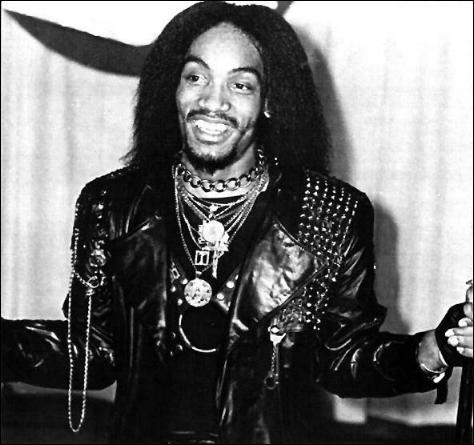As I’ve said before, my sixth form was a broad musical church. I’ve already blogged about a reggae tune and a psychobilly tune. Well, now its time for the Boyz n The Black Country Hood to celebrate some hip hop. The song that hit whilst we were in the sixth form was “White Lines (Don’t Do It).”
But who made it?
The two huge break out hip hop tracks down our way in the eighties were “Rapper’s Delight” by the Sugarhill Gang and “The Message” by Grandmaster Flash and The Furious Five. Only that wasn’t quite the full story.
Let’s go back and trace this one through.
“Rapper’s Delight” was released in 1979. I was twelve at the time but I instantly remember how fun the wordplay sounded. The record was the debut single for Sugarhill Records, a new label owned by Joe and Sylvie Simmons. Joe had a history in record companies and his wife Sylvie was a singer.

It’s worth bearing with this part of the story because it gives a clue to the genesis of the most hooky part of “White Lines”. In September 1979, Blondie and Chic were playing with the Clash at the Palladium in New York. When Chic played “Good Times”, members of the Sugar Hill crew jumped on stage and started jamming with the band. Some time later, Nile Rogers of Chic was out clubbing and heard a song that lifted the bass line from “Good Times.” He asked the DJ about the track and was pointed in the direction of the Sugar Hill Gang. Rogers and Bernard Edwards threatened legal action over copyright and a song writing credit was settled upon. Rogers now realises the significance of sampling that track.
Edwards’ bass line wasn’t the first borrowed riff on the record but it was the one that stuck. However before we to the “Good Times” bass, we get the initial bass riff from “Here Comes That Sound Again”, this 1979 disco hit for a British studio band, Love De-Luxe.
So Chic and Love De-Luxe begat the Sugar Hill Gang. Three years later, Sugar Hill Records released “The Message”, attributed to Grandmaster Flash and The Furious Five. The Message though was actually written and performed by Melvin Glover aka Grandmaster Melle Mel and Edward G Fletcher aka Duke Bootee. None of the other band members featured on the record. Joseph Saddler aka Grandmaster Flash got the hump with his lack of input and the band went looking for a new label. Melle Mel stayed around though and a year after “The Message” was released in 1982, “White Lines” hit the streets.
“White Lines” was pretty much solely performed by Melle Mel who was credited as Grandmaster Melle Mel, with a writing credit for Sylvie Simmons. Grandmaster Flash was nowhere near this record and he had already left the label.

The hook to “White Lines” again is the bass line (these boys catch on fast). The distinctive riff was played by Doug Wimbish, who was then the Sugarhill house bass player who eventually joined the fantastic Living Colour. What he was playing though was the bass part from “Cavern” by Liquid Liquid. They were dance punk “No Wave” New York band who the Sugarhill bunch had heard on the radio.
Liquid Liquid were initially pleased with this. However when “Cavern” stopped being played and “White Lines” broke big, Liquid Liquid’s label (99 Records) sued Sugar Hill successfully to the tune of $660,000. Sugar Hill declared bankruptcy due to this and tax issues and 99 Records folded due to the legal costs – no winners there then.

So what of “White Lines”?
Now it sounds like a fairly straightforward moralistic anti-drug song. The lyrics aren’t anywhere as near as sharp as “The Message.” Why did we go for it?
That’s easy – it’s so damned catchy and there are so many hooks. From the bass line, to the backing vocals, to the “Rang dang diggedy dang di-dang”, the breakdowns and the build ups: “Get higher baby!” – there’s so much to sing along too and enjoy, especially as a bunch of white kids growing up in South Central LA or the Bronx Sedgley. It inevitably ended up as a bloody good sing-song, and who can sniff at that?
Here’s a fantastic video for the song. It was filmed by Spike Lee, then a New York University Film Student.

It features a rather youthful Laurence Fishburne as the drug pusher and was produced in 1983. It transpired that when Sugar Hill Records saw the video at the time, they told Spike to sling his hook. Then when Spike broke big, as did Fishburne, Sugar Hill went back to Spike and asked him for permission to release the video. Unsurprisingly, Spike’s response was short and not very sweet. As the great Lowell George said “some people that you use on the way up, you might meet up on your way down.”
Here’s the video to enjoy:
Young Laurence did pretty well in his career as well, didn’t he?
As an aside, the “aaaaahhhhh, aaaaahhhhh” motif that appears is originally from the Isley’s version of “Twist and Shout”. I do wonder though if David Bowie borrowed the motif again from Melle Mel to include it in “Let’s Dance” which was being produced at the same time. Just wondering……..
By the way the cover image is by Edward Conde and his blogpost about it is here.

Great article 😀 ❤
LikeLiked by 1 person